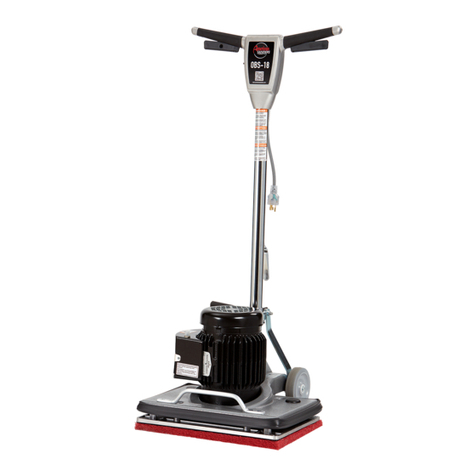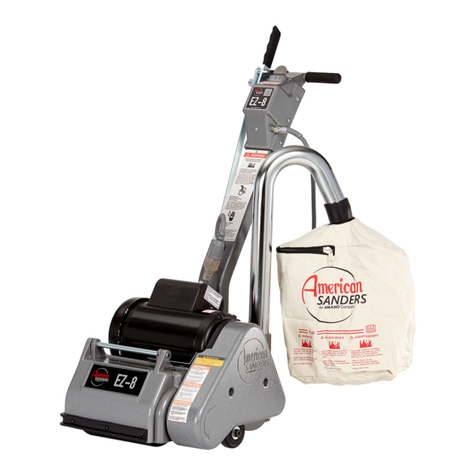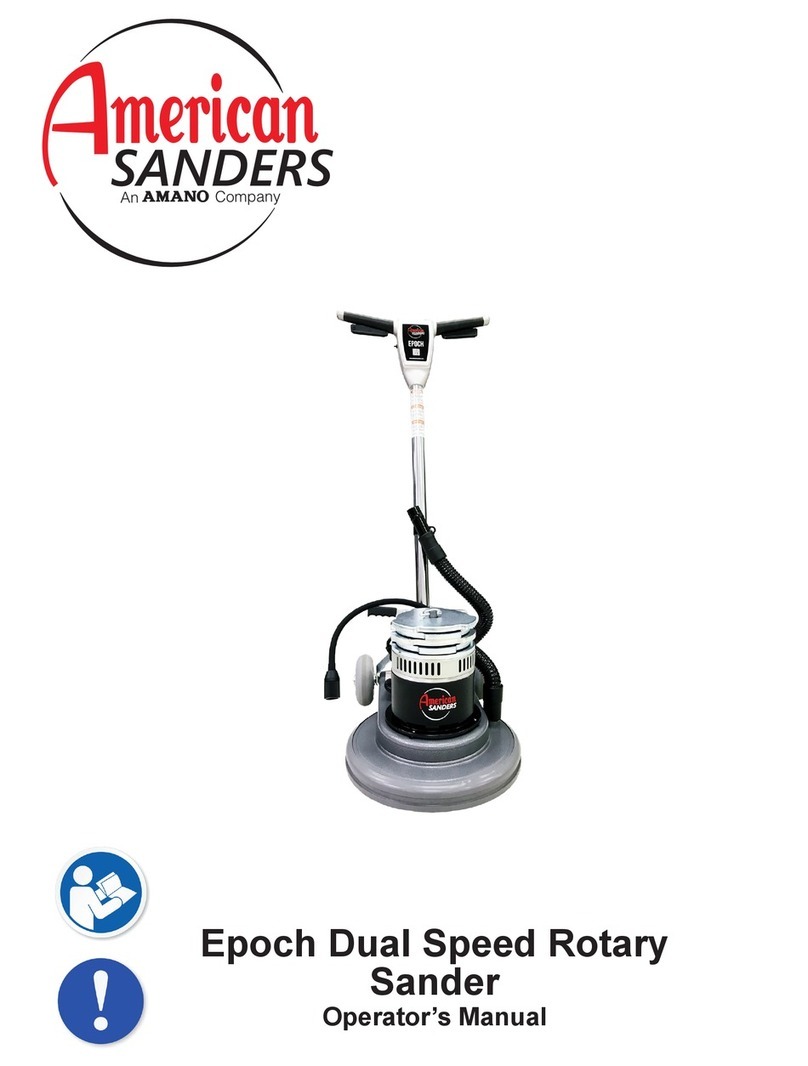
5
Operator Safety Instructions
DANGER means:Severe bodily injury or death can occur to you or other personnel if the DANGER statements found on this machine
or in this Owner’s Manual are ignored or are not adhered to. Read and observe all DANGER statements found in this
Owner’s Manual and on your machine.
WARNING means:Injury can occur to you or to other personnel if the WARNING statements found on your machine or in this Owner’s
Manual are ignored or are not adhered to. Read and observe all WARNING statements found in this Owner’s Manual
and on your machine.
CAUTION means:Damage can occur to the machine or to other property if the CAUTION statements found on your machine or in this
Owner’s Manual are ignored or are not adhered to. Read and observe all CAUTION statements found in this Owner’s
Manual and on your machine.
DANGER: Failure to read the Owner’s Manual prior to operating or servicing your Clarke American Sanders machine could result in
injury to you or to other personnel; damage to the machine or to other property could occur as well. You must have training
in the operation of this machine before using it. If you or your operator(s) cannot read this manual have it explained fully
before attempting to operate this machine.
DANGER: Sanding/nishingwoodoorscancreateanexplosiveorcombustibleenvironment.Donotoperatethismachinearound
solvents,thinners,alcohol,fuels,oornishes,wooddustoranyotherammablematerials.Cigarettelighters,pilotlights,
electrical sparks and all other sources of ignition should be extinguished or avoided. Keep work area well ventilated.
DANGER: Electrocution could occur if the machine is being serviced while the machine is connected to a power source. Disconnect the
power supply before servicing.
DANGER: Electrocutionorrecouldoccurifthemachineisbeingoperatedwithadamagedpowercord.Keepthepowercordclearofthe
pad. Always lift the cord over the machine. Do not move the machine by the power cord.
DANGER: To avoid injury keep hands, feet, and loose clothing away from all moving parts on the machine. Disconnect the power cord
before replacing the pad, changing the abrasive, or when servicing. Do not operate the machine unless all guards are in place.
Never leave the machine unattended while connected to a power source.
DANGER: Dustgeneratedfromsandingwoodoorscanspontaneouslyigniteorexplode.Promptlydisposeofanysandingdustinametal
containerclearofanycombustibles.Donotdisposeinare.
WARNING: This sander is not to be used on pressure treated wood. Some pressure treated woods contain arsenic and sanding pressure
treated wood produces hazardous dust. Inhaling hazardous dust from pressure treated wood can cause serious injury or death.
Sanding pressure treated wood decks or uneven surfaces can damage the sander which is not covered under warranty or
damage waiver.
WARNING: This machine should be grounded while in use to protect the operator from electric shock. This machine is provided with a
three-conductorcordandathree-contactgroundingtypeattachmentplugtotthepropergroundingtypereceptacle.Thegreen
(or green and yellow) conductor in the cord is the grounding wire. Never connect this wire to anything other than the grounding
pin of the attachment plug.
WARNING: Shock hazard. Do not use the machine if it has been rained on or sprayed with water.
WARNING: Injury can occur if protective clothing or equipment is not used while sanding. Always wear safety goggles, protective clothing,
and dust mask while sanding.
WARNING: Any alterations of modications of this machine could result in damage to the machine or injury to the operator or other
bystanders.Alterationsormodicationsnotauthorizedbythemanufacturervoidsanyandallwarrantiesandliabilities.
***THIS MACHINE IS INTENDED FOR COMMERCIAL USE ONLY***
English - EN Section - A








































